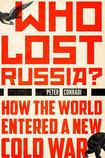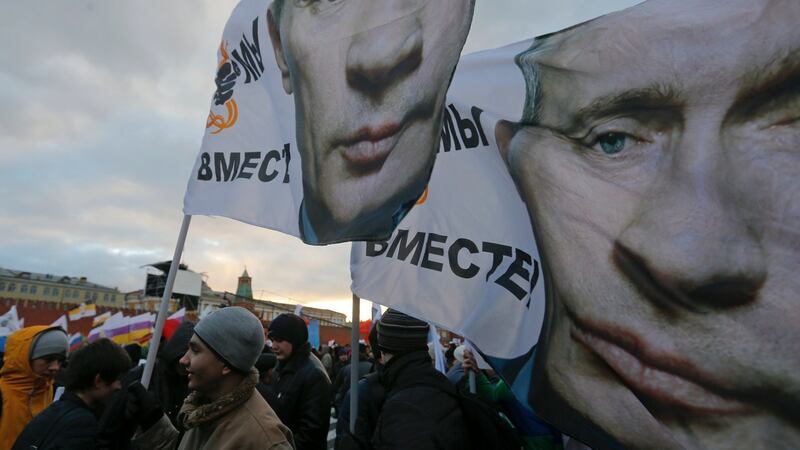
Of the many anxieties provoked by the Trump presidency, none is shared more widely than the fear that he will realign the United States with Russia. Notwithstanding the resignation of his reputedly pro-Russian National Security Advisor, Michael Flynn, if Trump comes good on his campaign words, he will end sanctions imposed on Russia to punish its intervention in Ukraine’s civil war, accept Moscow’s takeover of Crimea and forge a global anti-terrorist coalition with President Vladimir Putin.
Such an about-face would indeed be dramatic, but not without precedent. Republican presidents in the US have a history of seeking rapprochement with Russia and its predecessor, the Soviet Union.
After Stalin’s death in 1953 there was a notable respite in cold war hostilities during the first administration of Dwight D Eisenhower. In the 1970s, Richard Nixon, together with Henry Kissinger, was the architect of an American-Soviet detente. Even Ronald Reagan, who denounced the USSR as an evil empire, was quick to grasp the import of Mikhail Gorbachev’s transformation of Soviet society in the late 1980s. George W Bush famously looked Putin in the eye and reported that he had seen the soul of a straightforward and honest man “deeply committed to his country and the best interests of his country”. It remains to be seen if the notoriously narcissistic Donald J Trump is capable of such empathy.

The title of Peter Conradi's latest book, Who Lost Russia? How the World Entered a New Cold War, echoes the American cold war debate about who lost China to the communists. Conradi's answer to his book's question is that Putin was responsible for the west's loss of Russia, by eschewing liberal democracy in favour of socially conservative authoritarianism, by allowing his fears of western regime-change machinations to cloud his judgment, and by aggressive unilateralism in rebuilding and reasserting Russian power. Equally, Conradi is highly critical of western failings in relation to Russia, and does not demonise Putin.
The most immediate cause of the current troubles in Russian-western relations is the Ukrainian crisis, which exploded in 2014. But as Conradi’s lively and enlightening narrative shows, the new cold war has had a long gestation and is rooted in the failure of the US to treat post-communist Russia as an equal geopolitical partner and to seek its integration into western security structures. Russian complaints about the West breaking its promises, about its lack of respect for Russia as a great power, and about Nato expansionism to its very borders were as prevalent in the 1990s as they are today.
Yet when Putin came to power in 2000 he emphasised Russia’s European identity and saw it as his mission to improve ties with the US. He hoped to resolve the thorny issue of Nato’s expansion into former communist-bloc countries by the simple expedient of Russia becoming a member of that western alliance.
Opportunities
The opportunities for a fruitful American-Russian partnership reached their peak in the aftermath of the 9/11 attacks on the US when Putin became a willing collaborator in Bush’s war on terror. There is a story – not repeated by Conradi – that Putin proposed a new grand alliance to Bush. Just as the Soviets and the Americans had beaten Hitler in the second World War, so they would together combat terrorism and guarantee global security. The story is likely apocryphal, but it symbolises Putin’s high hopes for rapprochement with the US during the early years of his presidency.
Russian-American relations started to sour when, in 2003, Bush launched his regime-change war in Iraq, a move with which Putin disagreed. But more intractable and problematic was American support for the wave of so-called “colour revolutions” that began in 2004 in the former USSR states of Georgia and Ukraine. Populist protests in Russia demanding far-reaching democratic reforms added to Putin’s concern that he would be next on the western democracy crusade’s hit list. In a keynote speech delivered in Munich in 2007, he denounced the US’s determination to impose its system on other states and condemned its attempts to create and dominate a unipolar world
Putin’s newfound assertiveness was based on the recovery of the Russian economy from its disastrous collapse in the 1990s and on the benefits Russia was reaping from high oil prices. Important, too, was the consolidation of his domestic political support while the US was faltering in its counter-insurgency campaigns in Afghanistan and Iraq.
When Obama came to power in 2009 Putin was ready to reset Russian-American relations, but he was soon disillusioned by the western bombing campaign in Libya and by the double-dealing support of the US for an “Arab Spring” that would engulf Russia’s Syrian ally but exempt pro-western regimes such as Egypt and Saudi Arabia.
Putin’s breaking point was western support for the popular uprising in Ukraine that toppled the country’s democratically elected pro-Russian president.
Ukrainian crisis
As with the rest of the book, Conradi’s handling of the Ukrainian crisis is both careful and balanced. Is Russia’s expansion into Ukraine a prelude to a Putin-led programme to reabsorb former Soviet territory and recreate the USSR? Conradi thinks not: “Rather than the staging post in a carefully thought-out plan to reconstitute the Soviet Union, his action appears instead to have been instigated by the fear that a country he and many other Russians still considered part of their homeland was in danger of drifting into the western camp. He was also counting on a warm reception from the locals and gambled, rightly, that the West would do nothing to stop him.”
There has been much feverish speculation about Putin’s designs on the Baltic states of Estonia, Latvia and Lithuania, as they all have large Russian populations. But, as Conradi points out, if Putin did intend a westward expansion of Russia his forces could easily have grabbed more Ukrainian territory.
Although this book mostly concerns Russian foreign policy, it also covers western developments, especially the evolving perspectives of top American decision-makers. Conradi was Sunday Times correspondent in Moscow in the 1990s and he utilises his personal experiences of Russia as well as his journalistic skills to colour the narrative.
The book is very up-to-date, incorporating an epilogue on Trump’s election victory – met with jubilation as well as surprise by most Russians, who had feared the hawkish Hillary Clinton would win.
“Putin and Trump appear destined to share the world stage for some time”, writes Conradi. “Will a more conciliatory stance by Washington usher in a new era of co-operation between the two erstwhile cold war rivals or instead be seized upon and exploited by the Kremlin as a sign of weakness?”
That, as they say in the US, is the $64,000 question and has been the subject of incessant debate since the collapse of Soviet communism.
All American presidents since 1991 – Democrat as well as Republican – have sought to improve US relations with Moscow, but because they perceived Russia to be weak were only interested in a deal on their own terms. It will be interesting to see what happens when Trump’s vision of “America First” encounters its equally potent Russian counterpart.
Geoffrey Roberts is professor of history at University College Cork










